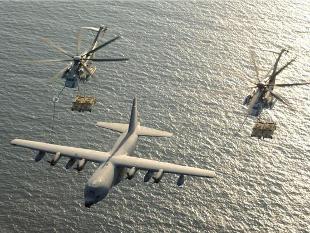Research Interests
Tensegrity Structures
Tensegrity structures are prestressed structures composed of tendons/cables and bars, with various applications, from biological models to space systems.

My research addresses theoretical aspects of tensegrity mechanics as well as applications. Structural dynamics and control studies are pursued, primarily for large displacement applications. Structural design for dynamic properties is also of interest. Membranes have been recently combined with tensegrity to synthesize new systems. From the (quite a few) publications that I have written on the subject, I selected the following overview as an introduction to tensegrity (for others - older, more recent, or more technical writings - see my google scholar or researchgate accounts):
Sultan, C., Tensegrity: Sixty Years of Art, Science, and Engineering, Advances in Applied Mechanics, Vol. 43, 70-145, 2009
Rotorcraft Modeling and Control
This research addresses helicopter control problem at its roots, by developing helicopter models with the characteristics required for control design. Many helicopter models are either too simple for realistic control implementation or too complicated, requiring substantial pre-processing. During pre-processing the physics of the initial model may be significantly altered to generate models that are adequate for control design.
We developed physics based, control oriented models that capture essential helicopter dynamics (e.g. blade lead-lagging, flapping, flexibility). Pre-processing for control design was conducted such that the physics of the original models is minimally altered. These models address two major issues in rotorcraft control. First is the development of control technologies which provide distributed control authority and the capability to control dynamic behaviors which in conventional rotorcraft are not controlled. Second are advances in control theory which allow implementation of controllers that can handle highly coupled models, such as those that describe rotorcraft dynamics, as well as multiple objectives and constraints.
These models have been used in integrated helicopter and control design, passive and active blade morphing, sensor failure management. Also, by integrating airwake models with complex helicopter-ship models and model predictive control, enhanced autonomy in close proximity operations, including ship landings, has been illustrated.

A Relevant Publication
Oktay, T., Sultan C., Modeling and Control of a Helicopter Slung-Load System, Aerospace Science and Technology, Vol. 29, 206-222, 2013
Planning and Coordination
Trajectory generation and coordinated control for single and multiple vehicles (formations) subject to heterogeneous constraints and uncertainties are investigated. Fault tolerant control and failure management via control and reconfiguration are also of interest. The primary focus is on fast algorithms, ideally for large formations.
A Relevant Publication
Sultan, C., Seereeram, S., Mehra, R., Deep Space Formation Flying Spacecraft Path Planning, Intl. Journal of Robotics Research, Vol. 20(4), 405-430, 2007
Energy Harvesting
Marine energy systems, like ocean current turbines, are investigated for renewable energy solutions. Feedback control design for stabilization and optimal operation of single and coordinated systems is of major interest.
Another research direction focuses on converting the kinetic energy of mechanical vibrations into electric current. The focus is on using large amplitude vibrating structures (e.g. membranes) for efficient kinetic energy harvesters.
A Relevant Publication
Ngo, T., Sultan, C., Van Zwieten, J.H., Xiros, N.I., Constrained Control of Moored Ocean Current Turbines with Cyclic Blade Pitch Variations, IEEE Journal of Ocean Engineering, DOI: 10.1109/JOE.2020.2985599, 2020


